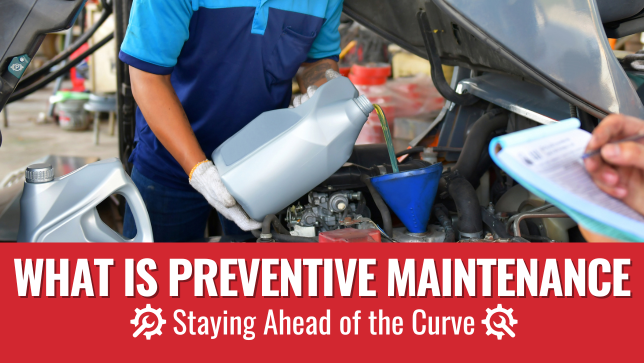What is preventive maintenance? It is a vital strategy for maintaining the health and efficiency of equipment across various industries.
By taking this proactive approach, businesses can schedule regular maintenance tasks before issues arise, minimizing the risk of unexpected breakdowns and costly downtime.
This article explores the concept of preventive maintenance, emphasizing its role in extending equipment lifespan, enhancing operational efficiency, and ensuring safety.
From simple routine checks to comprehensive maintenance plans, we will explore the practices and benefits of preventive maintenance, along with real-world examples and future trends.
Let’s dive in!
What is Preventive Maintenance
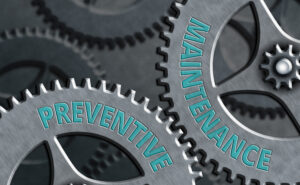
Preventive maintenance (PM) is a proactive approach to keeping your equipment in top shape by scheduling maintenance tasks before problems arise. It aims to minimize unexpected breakdowns and reduce costly downtime by focusing on routine tasks like cleaning, lubricating moving parts, and replacing components before they wear out.
In addition to preventing failures, preventive maintenance extends the lifespan of equipment, whether you’re working with hydraulic lift cylinders, forklift tires, or material handling systems.
For example, regularly servicing parts like the lift cylinder and steering wheel on a forklift truck can help avoid sudden malfunctions that disrupt operations and lead to expensive emergency repairs.
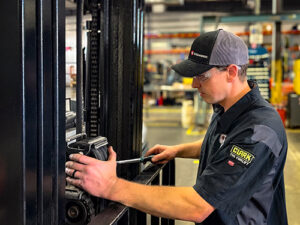
By implementing condition monitoring and conducting safety checks as part of a systematic schedule, preventive maintenance ensures your equipment is always running at its best. This includes tasks such as checking the overhead guard or testing the tilt cylinder on forklifts, which help reduce the risk of accidents while improving performance.
Effective preventive maintenance requires careful planning and documentation. You need to keep track of inspections and servicing, especially for crucial parts like the forklift mast, cushion tires, or propane tanks. This approach not only saves time and money in the long run but also enhances safety and operational efficiency.
Do you currently know what condition your forklift forks, chains, or tires are in? If not, you may be risking costly downtime, maintenance headaches, and even accidents. Fortunately, an easy solution is available – our complimentary Fork, Chain, and Tire Survey.
The Benefits of Preventive Maintenance

There are many reasons to adopt a preventive maintenance plan, but here are a few benefits that many businesses reap from implementing a PM plan.
- Safety: Regular maintenance helps reduce safety risks by keeping equipment in top condition, making sure operators can work without unexpected issues.
- Cost Reduction: Preventive maintenance helps avoid expensive emergency repairs and reduces downtime, saving money in the long run.
- Efficiency: Well-maintained machines run more efficiently, which leads to better productivity and fewer disruptions.
- Extended Asset Lifespan: Routine care extends the life of your equipment, reducing the need for frequent replacements and keeping overall costs down.
Examples of Preventive Maintenance
Preventive maintenance is essential across various industries as most machinery requires an upkeep plan to keep it running. We gathered some examples below of industries where PM is applied effectively:
- Manufacturing Industry: Regular maintenance of production equipment, such as conveyor belts and presses, is crucial for preventing breakdowns. Tasks include lubricating moving parts, checking the forklift mast for wear, and calibrating machines for optimal performance.
- Vehicle Maintenance: Routine servicing of vehicles, including forklift trucks, helps prevent failures that can disrupt workflows. Examples include regular oil changes, tire rotations, and engine inspections. Checking critical components like propane tanks and steering wheels helps maintain the safety and reliability of internal combustion forklifts.
- Packaging Equipment: In industries relying on high-speed packaging machines, regular inspections and repairs are vital. For example, after sealing a large number of boxes, the machinery is checked for wear to avoid costly delays. Lubrication and parts replacement help keep the equipment running smoothly.
Creating a Preventive Maintenance Plan
What is Preventive Maintenance: Implementation and Strategy

Implementing a preventive maintenance plan is not just about fixing problems before they occur; it is about creating a sustainable system that keeps your operations running smoothly and efficiently.
Here is how businesses can implement an effective preventive maintenance strategy.
Maintenance Strategies and Programs
- Evaluate Your Equipment: List all your material handling equipment and assess their condition, age, usage frequency, and criticality in your operation.
- Create a Schedule: Based on manufacturer recommendations and work orders, create a tailored preventive maintenance schedule for each piece of equipment.
- Select Your Maintenance Team: Assign responsibilities clearly among your staff or partner with experienced service providers like Conger Industries Inc., who specialize in maintaining various material handling machinery.
- Maintain Records: Keeping detailed records helps track performance over time, making future planning more accurate while providing valuable insights into potential areas for improvement.
The key is setting up efficient work patterns for your maintenance technicians. Minimize travel time between projects and schedule tasks during natural production downtimes.
Seizing this chance can significantly economize on resources and elevate the efficiency of your preventive maintenance approach.
Overcoming Challenges in Maintenance
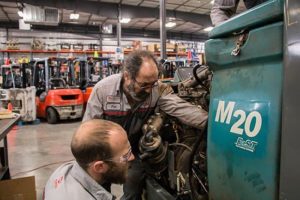
Common Challenges in Maintenance
While the benefits of preventive maintenance are clear, implementing it successfully isn’t always a walk in the park. Let’s break down some common hurdles you might encounter:
- Lack of Resources: Budget limits or a shortage of skilled staff can make sticking to a maintenance schedule tough. This often leads to deferred tasks, which then snowball into more significant issues. But you don’t need to overhaul everything at once. Focus on high-priority equipment first—think of critical machinery that directly impacts production.
- Over-Maintenance: It might sound strange, but you can actually do too much maintenance. Servicing equipment more often than necessary can drain resources. Using a balanced schedule that’s informed by manufacturer guidelines and real-world data ensures you’re not wasting effort. Maintenance software, like CMMS, can help you strike this balance.
- Inadequate Training: Technology evolves, and so do the machines in your facility. Training your team regularly isn’t just a good idea; it’s crucial to ensuring that your preventive maintenance efforts stay on track. Bringing your team up to speed on the latest techniques and tools will make all the difference.
- Poor Planning: Even with the best-laid plans, unexpected failures happen. That’s where flexibility comes in. Having backup plans or quick access to spare parts helps minimize the impact of unplanned downtime. It’s all about staying adaptable.
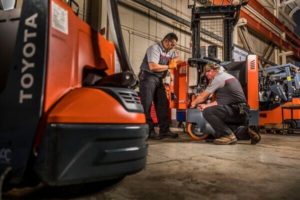
Solutions and Best Practices
To steer through these challenges, you’ll need some solid strategies in place. Here’s what can help:
- Build a Preventive Maintenance Plan: A well-thought-out plan keeps your machinery in check and reduces unplanned breakdowns. With a clear schedule, you can catch small issues before they turn into bigger, costlier problems.
- Prioritize Training: Equip your team with the knowledge they need through ongoing education. This will help them maintain machines more effectively and safely. Plus, staying updated with industry trends can introduce more efficient ways to handle maintenance.
- Use Technology to Your Advantage: A computerized maintenance management system (CMMS) can automate and streamline your maintenance tasks. These tools track performance, forecast repairs, and keep everything running smoothly, ensuring you’re always one step ahead of equipment failure.
Types of Maintenance

When it comes to equipment maintenance, businesses typically focus on three primary approaches: Preventive Maintenance, Predictive Maintenance, and Reactive Maintenance. Each method has unique benefits and drawbacks depending on the situation and equipment in use.
Preventive Maintenance
Preventive maintenance refers to scheduled inspections and routine servicing aimed at preventing equipment failure before it happens. This proactive strategy focuses on maintaining machinery health by addressing potential issues before they escalate.
Key activities include:
- Scheduled Inspections: Regularly checking equipment for signs of wear or damage to address minor issues before they lead to breakdowns.
- Lubrication: Ensuring that moving parts are properly lubricated, reducing friction and preventing excess wear.
- Cleaning: Keeping equipment clean from dirt and debris, which can lead to malfunctions if not addressed.
- Component Replacements: Replacing worn components based on manufacturer guidelines to ensure optimal performance and prevent unplanned downtime.
This approach can be especially beneficial for machinery like forklifts, where preventive maintenance of key parts such as the forklift mast, tilt cylinder, and lift cylinder helps avoid costly repairs and ensures the safety of operators. Additionally, maintaining forklift tires, such as pneumatic tires and cushion tires, can reduce wear and tear on the equipment, preventing asset downtime.
Predictive Maintenance
Predictive maintenance takes a more advanced approach by utilizing real-time data and condition monitoring tools, such as vibration analysis, infrared thermal imaging, and oil analysis, to predict when maintenance is needed. Rather than scheduling maintenance based on fixed intervals, this method allows for more precise timing, minimizing unplanned expenses and reducing downtime.
Benefits of predictive maintenance include:
- Strategic Scheduling: Maintenance tasks are performed only when necessary, avoiding over-maintenance.
- Reduced Downtime: By predicting potential failures, businesses can schedule repairs before equipment failure occurs, keeping operations running smoothly.
- Improved Efficiency: The use of IIoT devices and advanced sensors allows for data-driven decisions, further reducing the likelihood of breakdowns.
Predictive maintenance is ideal for critical systems and high-use equipment, where downtime can have significant financial and productivity impacts. For example, this approach can optimize the performance of forklift batteries and internal combustion engines, ensuring that essential forklift parts are functioning correctly.
Reactive Maintenance
Reactive maintenance, also known as the run-to-failure method, is the practice of fixing equipment only after a breakdown has occurred. While it may appear cost-effective upfront due to the lack of preventive measures, it often results in higher expenses, including emergency repair costs, extended equipment downtime, and potential damage to other components.
Drawbacks of reactive maintenance include:
- Increased Downtime: Unexpected failures can lead to long periods of inactivity, disrupting workflows and reducing productivity.
- Higher Costs: Emergency repairs are typically more expensive, and failure to address smaller issues early can result in the need for larger, more costly repairs later.
- Safety Risks: Running equipment to failure can pose safety risks, especially for machinery handling heavy loads, such as forklifts, which rely on well-maintained forklift masts and hydraulic lift cylinders for safe operation.
While reactive maintenance may be suitable for non-critical systems or components, businesses looking to minimize disruptions and control long-term costs should focus on preventive and predictive strategies.
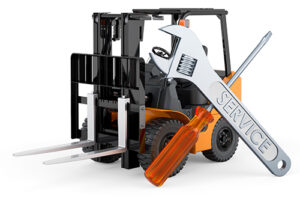
Future Trends in Maintenance Strategies

What is preventive maintenance evolving to become with rapid technological advancements?
Businesses that stay ahead by adopting innovative strategies will enhance their operational efficiency and contribute positively toward environmental sustainability.
- Predictive Analytics: This advancement allows more businesses to use data analysis tools to analyze data and predict when equipment might fail. It signifies predictive maintenance to be performed just in time to prevent it.
- Internet of Things (IoT): IoT technologies enable real-time monitoring of equipment conditions. Sensors can alert managers immediately when there are signs of wearout or failure risks, allowing for prompt intervention.
- Eco-friendly Practices: There’s a growing trend towards incorporating sustainability into preventive maintenance practices—such as choosing environmentally friendly lubricants or optimizing energy consumption during operations.
Questions about What is Preventive Maintenance

What is PM for maintenance?
PM stands for Preventive Maintenance. It is similar to a health check-up but for machines. The goal is to identify and address potential issues before they escalate into significant problems.
What is Preventive Maintenance’s Role in Energy Efficiency?
- Reduced Energy Consumption: Well-maintained machines run smoother and consume less power compared to those operating under strain due to wear or misalignment.
- Prolonged Equipment Life: Regular upkeep prevents premature aging of components which can lead to increased energy use over time.
- Avoidance of Major Breakdowns: By identifying issues early on through routine checks, businesses can avoid costly repairs that result from major breakdowns—keeping operational costs low.
What is Preventive Maintenance for an Automobile
Preventative maintenance for an automobile includes regular oil changes, tire rotations, and filter replacements among other services ensure that vehicles run smoothly with optimal fuel consumption rates.
What is Preventive Maintenance for a Forklift
Preventive maintenance for a forklift includes hydraulic fluid checks, lights and electrical components, tire conditions, and mast including interlocking rails, forks, and rollers.
Can You Explain What is Preventive Maintenance in the Context of Fleet Management?
Creating an effective Fleet Preventive Maintenance program is crucial for the longevity, efficiency, and safety of your fleet. It involves meticulously recording each vehicle’s details and service history to prioritize preventive over reactive maintenance.
- Adhering to the Original Equipment Manufacturer (OEM)’s suggested maintenance tasks and schedules
- Tailoring a PM schedule for each vehicle based on its specific history and anticipated needs
- Tracking mileage are key steps in predicting future service needs accurately for your fleet.
Conclusion:
In conclusion, implementing a preventive maintenance program is essential for businesses aiming to maximize equipment reliability and operational efficiency.
By prioritizing regular maintenance tasks and employing a systematic approach, organizations can reduce unexpected failures, enhance safety, and extend the lifespan of their assets.
As technology continues to advance, the future of preventive maintenance will increasingly leverage data-driven strategies and eco-friendly practices, enabling businesses to stay ahead of potential issues while promoting sustainability.
Embracing preventive maintenance not only leads to smoother operations but also fosters a culture of safety and accountability within the workplace.
